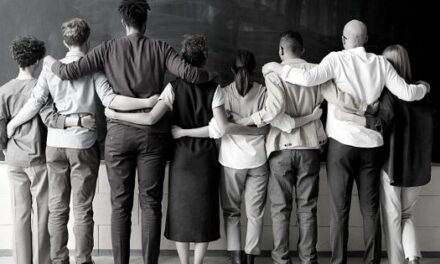It’s the age of remote and flexible work. Remote working has its advantages, however, this way of operating also has its challenges. How do we best anticipate and address those challenges to set teams up for success?
Scholars at Harvard University have studied the conditions for team effectiveness and have developed a model that predicts 80% of a team’s success. For those responsible for leading remote teams, apply this framework and you’ll be on the way to great outcomes from a remote team.

The 6 Team Conditions model provides a framework of six conditions that can be deliberately applied to the design of a team to create the best environment for teamwork to happen. The model proposes that there are a number of essential and enabling conditions for creating effective teams. The essential conditions must be in place for effective teamwork to occur. The enablers accelerate team performance and can be addressed once the essential conditions have been met.
The Essentials
Is this a real team?
The most simple definition of a team is ‘two or more individuals working together to achieve a common goal’. Working together is a critical concept as task interdependence differentiates a team from a group. You must have a real team, with team tasks to perform and members need to know who is on the team.
Does this team have a compelling purpose for its work together?
The team must understand the purpose that guides their work and be clear on the reason that this group of people has been brought together. The team’s purpose needs to be compelling and consequential enough to engage team members’ commitment to working towards their common goals.
Are the right people on this team?
The team must be composed of people with appropriate skills, knowledge, and experience to perform the team’s work. This includes teamwork skills! That is, the ability to collaborate effectively with others, give and receive feedback, and engage in reflective learning.
The Enablers
Have clear team structures been created?
This refers to task design, team composition, norms of conduct, the number of members, and approach to tasks. A team needs to be small enough that it can work together effectively and be engaged in tasks that make sense to be done by a team. They also need to agree on team norms around how they will work together.
Is there a supportive organisational context?
A supportive organisational context provides appropriate resources, team performance (as opposed to individual performance) is rewarded, and there is access to relevant training and development, and effective information systems. These organisational structures and systems can either help or hinder the work of the team.
Is someone accountable for coaching the team?
If the team has been well-designed with the essential and enabling factors attended to, then it can benefit from team coaching. The team coach needs to have an understanding of team effectiveness and group dynamics and works with the whole team, individually and together, to help them make the most effective use of their resources.
How to support remote teams
1) Promote interdependence between team members
Make sure that when team members come together, they are focused on collective work. Lengthy work-in-progress conversations or general updates can create a negative impact on the motivation of the group. Peer consultation is a way to create interdependence, motivation, and social support between team members.
2) Reaffirm the purpose of the team
Team members need to know what the purpose of the team is and to have a sense that what they are working on is consequential and focused on a compelling future goal. If the team has recently transitioned to remote working there may be things that need to be set aside for now. Engage the team with the consequentiality of the work that they are doing and allow them to decide which priorities need to be addressed.
3) Set short terms goals and conduct Before Action Reviews
Having clear goals and talking about how these will be achieved is a way to establish group norms. Ask, what is it that the team must do to achieve these goals? What must the team not do? Review and re-establish team norms of working together which may change if the team doesn’t usually work together remotely.
4) Promote collaborative practices
Leaders can tend to become more directive when leading remote teams and this can be a step back from a shared authority which may have been developed in the team. Look for ways to share the leadership role and to create cycles of learning to identify potential challenges and reflect on lessons learned.
Effective teams
An effective team will have a sense of performing and achieving their goals. The processes of the group will support the team’s work and will improve over time. Members of the team will value being part of the team and will have a sense of learning, growth and satisfaction through their role in the team.
References:
Twiss, A. (2016). Executive Team Coaching: Is There an Impact on Team Effectiveness, and do Team Roles Matter? [Unpublished Masters thesis]. Murdoch University. Perth, Western Australia.
Hawkins, P. H. (2014). Leadership team coaching in practice: Developing high performing teams. London: Kogan Page.
Wageman, R., Hackman, J. R., & Lehman, E. (2005). Team diagnostic survey: Development of an instrument. The Journal of Applied Behavioral Science, 41, 373-398
Wageman, R. (2020). Team Diagnostic Survey, Community of Practice. 7 April 2020. 6 Team Conditions. New Hampshire, USA.






















